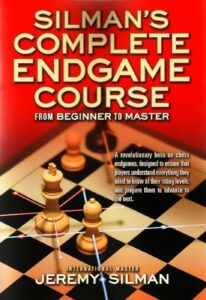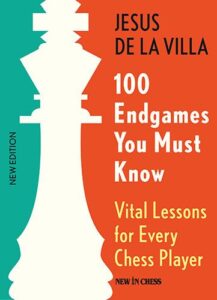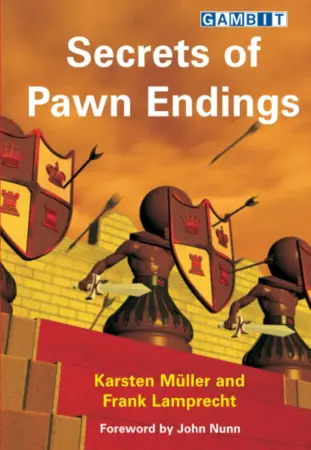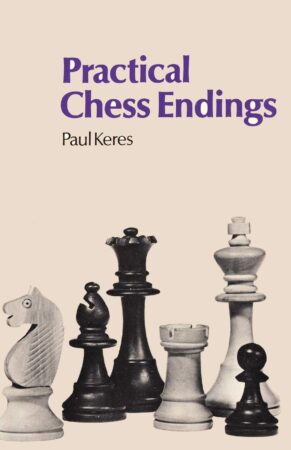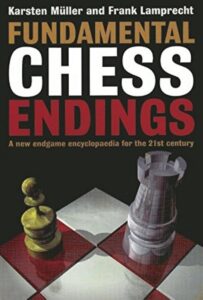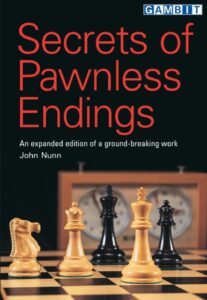Introduction
If I had to choose one chess book everyone should go through, it would probably be Dvoretsky’s Endgame Manual. Dvoretsky’s approach to endgames, both from a conceptual and theoretical perspective is unmatched, and his manual should suffice to teach anyone, regardless of their current strength, everything they have to know about endgames to achieve master level skill in endgame play. The new, 6th edition has been expanded and revised by Karsten Müller & Alex Fishbein, two great endgame experts and authors, whose efforts include endgame classics such as Endgame Corner, which they wrote together, Fundamental Chess Endings, Understanding Rook Endgames, How to Play Chess Endgames, as well as the Fasttrack edition of the Manual.
What’s new in the 6th Edition?
Mistakes found by readers in the previous editions have been corrected, sometimes changing the evaluation and the narrative of the positions and problems. The authors have added new theoretical and practical material, prioritizing topics where they often saw players go astray in their reasoning. They have also included the work of Yusupow and Zoran Petronijevic on a few more complex endings. The first edition came out in 2003, when 6-piece tablebases didn’t exist. 22 years later, our resources are vastly superior, making the new, 6th edition almost perfect (I say almost because a diligent reader is sure to find a few inaccuracies here and there even though none have been discovered yet).
“The book has been recognized worldwide as one of the classics of chess literature, and any change to it requires adherence to the author’s unique method of presentation. At the same time, endgame theory has expanded in the last decade, and new examples have enriched the trove of chess practice. Just before he left us, Dvoretsky had begun to compile a list of revisions for a possible fifth edition and had sent the list to the publisher.” – Karsten Müller in the introduction to the 6th edition
The best endgame book ever written
Most people are of the opinion that it should be read by strong players, and that novices should steer clear from Dvoretsky’s Endgame Manual, their argument being that it would be too difficult to understand. I believe that to be false for many reasons. Firstly, everyone needs to understand endgame concepts and everyone needs to be familiar with basic theoretical endgames. Dvoretsky’s Endgame Manual will teach you that as well as any other, less difficult endgame book. Secondly, not being able to solve a problem, or understand a position, doesn’t mean that one wouldn’t benefit from trying. Thirdly, Dvoretsky’s Endgame Manual is not Harry Potter. You don’t sit down and read a hundred pages in one sitting. You work through the book slowly, playing positions out over a real board. When you finish a game, you reference the manual to see where you’d gone wrong. Everyone, regardless of their rating, can and should do that.
The greatest chess coach
Lastly, Dvoretsky is probably the most famous coach in history. His teaching methods work. They have produced world class players and helped many achieve the Grandmaster title. It makes sense to conclude that his experience would help him produce a close-to-optimal endgame book. In short, do not fear Dvoretsky’s Endgame Manual. And don’t read it like a book. Use it daily to review the endgames you’d encountered that day. That way, learning will be effortless and natural. As Jacob Aagaard, a man who has first hand experience with Dvoretsky’s teaching and writing methods puts it: “This book is Dvoretsky’s most significant book. It gives the ambitious player a chance to do top level training, but also gives the amateur a chance to see what is really important. If any chess book can make you a better player, this is it.”
Dvoretsky’s Endgame Manual first came out in 2003, and it was immediately recognized as one of the best books on the endgame ever written. It has had 4 new editions since, each expanded and revised slightly. The book is massive. It covers every important endgame in detail. It’s like buying the pro version of 100 Endgames You Must Know. It’s divided into sections by piece combinations: Pawn Endgames, Knight vs Pawns, Knight Endgames, Bishop vs Pawns, Opposite Colored Bishops, Bishops of the Same Color, Bishop vs Knight, Rook vs Pawns, Rook Endgames, Rook vs Knight, Rook vs Bishop, Queen Endgames, Queen vs Rook, and less frequent material relations. In short, Dvoretsky devoted a section to each important endgame type.
The Structure of the Book
Each section is subdivided based on concepts, which is what makes the manual more useful than any other endgame book. Rook endgames, for example, include chapters such as: Balance on One Wing and an Extra Pawn on Another, A Far Advanced Passed Pawn, or The Pawn Hasn’t Crossed the Mid-line, which is more useful to humans than simply listing and explaining the theoretical endgames.

Queen endgames are an especially obvious example of this, as Dvoretsky subdivided the section on chapters such as Activity and Tactical tricks, which makes it easy for humans to learn what’s important in all queen endgames, not just in a very specific theoretical scenario. Compared to Secrets of Queen Endgames by Berkes and Karolyi, Dvoretsky’s section may not be as detailed, but it’s enough to equip you to navigate most queen endgames successfully.

The Difficulty
The manual is difficult to read, but Dvoretsky made sure that each type of position is backed up with examples from practical play and detailed explanations. It should be used by every ambitious player and taken seriously by advanced and master level players. The analysis and the problems will be difficult for anyone below 2000 FIDE for sure, and not even a GM would find everything in the book easy to understand. I have struggled with it for months and there are still positions I can’t solve or explain.
How to use and read the Manual
I have gone through Dvoretsky’s Endgame Manual about 8 years ago.I haven’t reread it until the 6th edition came out. What I have been doing, though, is using it to learn from the endgames I played. I will finish a game and see what Dvoretsky has to say about the type of endgame I had encountered. If there are concepts I wasn’t aware of, I will reread the entire chapter and try to solve most of the positions. I think that’s a painless way to use it. Make sure you address it when you don’t understand an endgame you had over the board.
Conclusion
If you’re an ambitious player, you should read Dvoretsky’s Endgame Manual. No, not really. You should be able to play the endgame well, and there is no other single resource that can teach you how to do that better than Dvoretsky’s Endgame Manual.
To finish, here is a quote by GM Yusupov, Mark Dvoretsky’s most famous student from the introduction to the 6th edition: “I am sure that those who study this work carefully will not only play the endgame better, but overall their play will improve. One of the secrets of the Russian chess school is now before you, dear reader!”



